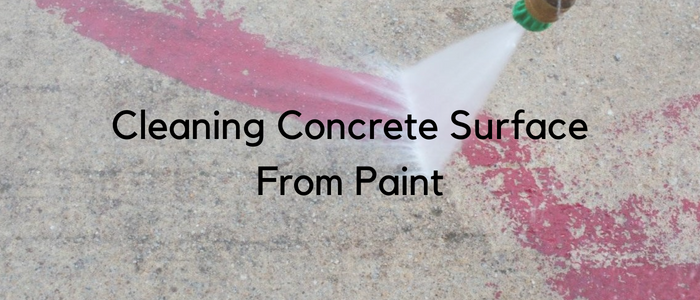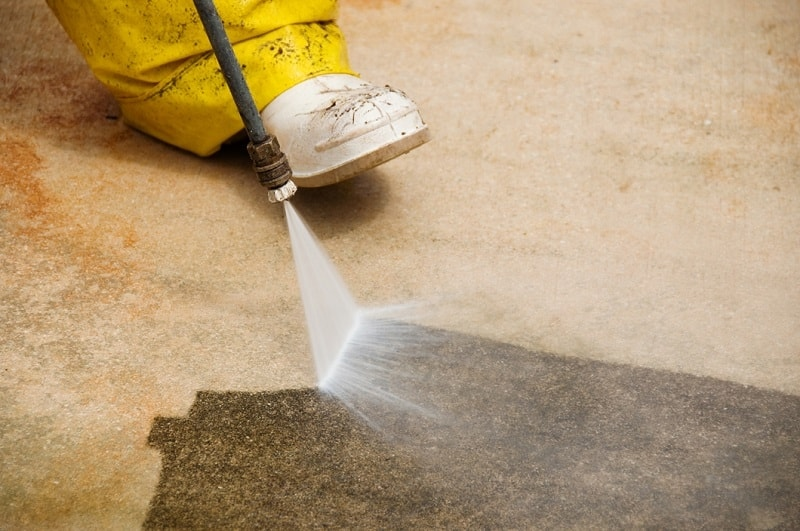Removing Paint from Concrete Surface: One of the least expensive and easiest-to-maintain flooring options is concrete floors. It always seems at the beginning that paint spills on concrete are a disaster, they are actually nothing to worry about. Most of the time, with a little time and effort, we can effectively remove the paint off concrete.
Concrete quickly absorbs liquids like paint because it has a porous nature that makes it susceptible to external materials. As a result, how long it takes to remove paint totally depends on the conditions of the area you are working with.
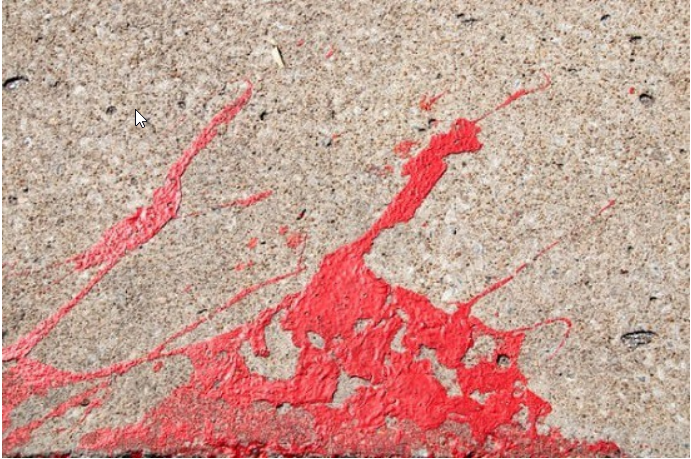
Determining how to remove paint from concrete can be challenging since it can penetrate for up to few millimetres below the concrete’s outer surface, but there are several options available to consider if you encountered such situation.
Various factors, such as the kind of paint (water-based vs. oil-based), the size of the spill, and the concrete’s permeability, will affect the instruments and techniques required for paint removal. Here are several methods to consider:
Techniques for Removing Paint from Concrete Surface Outdoor & Indoors
1. Paint Removers
Paint spills on concrete surfaces may be removed with chemical wood strippers. Each type of paint should have some sort of a remover that is aimed for its kind.
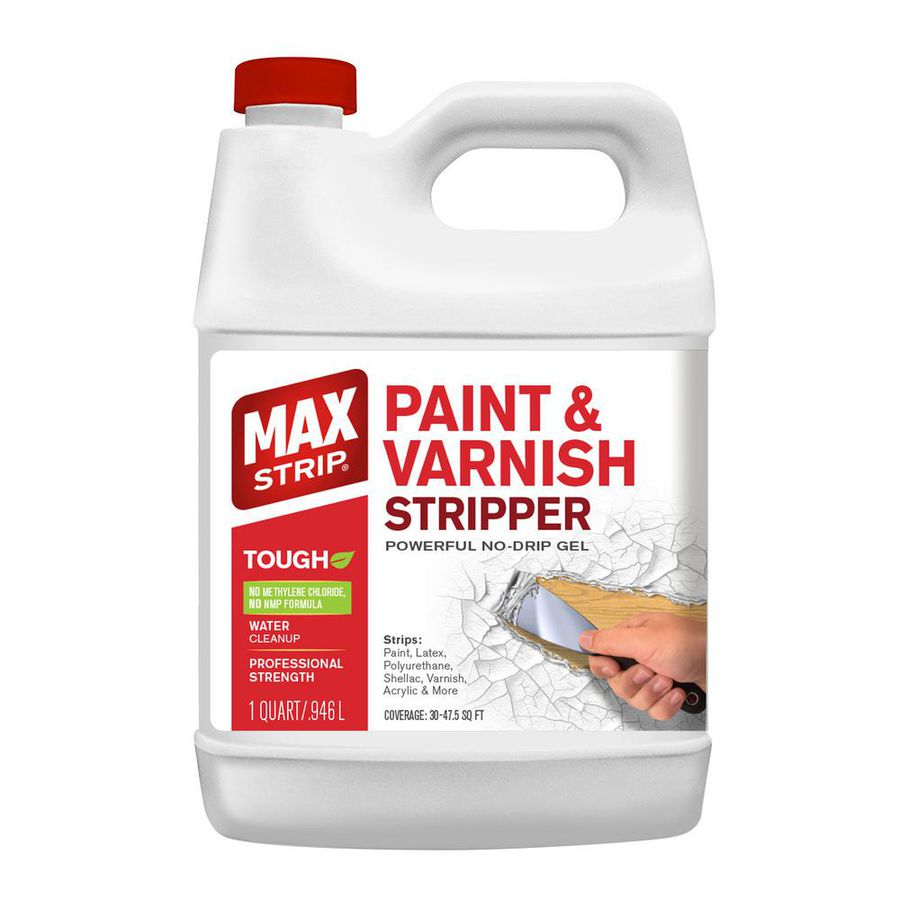
Certain treatments may only dissolve latex paint with a water basis whereas others can remove paint with both an oil and water base.
The steps of removing paint from concrete with chemical removers are as follows:
Apply a sufficient coating of paint remover using a brush or broom as directed by the manufacturer specifications. Try to apply the material locally on the spot of interest.
Wait for some time until the stripper performs its action and paint has softened and it has fully absorbed ( 4 – 24 hours).
When you notice that the paint is softened, scrape it of with the scraper or a ire brush.
After this process, if any paint exists on concrete, reapply this stripper and with for some time the remaining paint is softened and remove.
Clean any residues. You may use a degreaser to clean the concrete surface.
2. Power Washing/cleaning
Although paint removers work well, they may leave a mess behind if they are not applied properly. Thus, if the paint dropped on an outdoor concrete surface, power washing can be considered as an excellent option that minimizes most cleanup associated with paint removers.
For the optimum results, use a power washer that has a pressure rating of at least 3000 psi and a flow rate of at least 4 gallons per minute. If it is just a for one thing use, you can rent or borrow the washer. This method does not need the usage of any chemicals because the water pressure is enough to remove in paint stains. It also works for recent drips of paint. So it might not work if the paint is too old.
3. Soda Blasting
Power washing and chemical strippers will not be able to remove tough paint spots, but soda blasting is an efficient and ecologically friendly alternative.
Multiple layers of paint or coatings can be swiftly removed with this technique, which blasts granular sodium bicarbonate (baking soda) into the surface under high pressure. It won’t harm the concrete surface and is a less drastic method of paint removal than sandblasting.
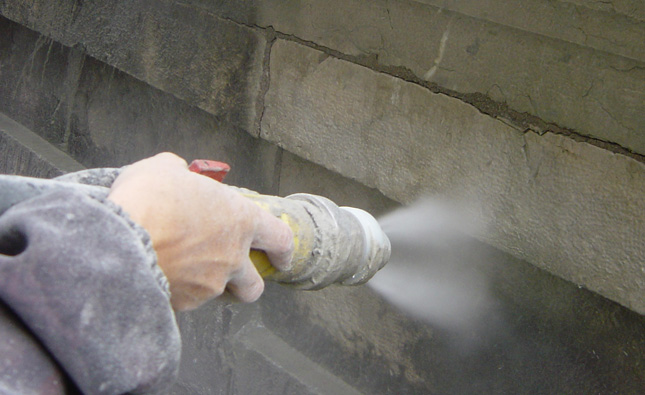
Regular sandblasters won’t work with sodium bicarbonate, so you’ll need a soda blaster and the right equipment. For a tight finish, the blaster’s nozzle should be moved to the painted area while being held near to the ground.
4. Floor Surface Grinders
Instead of utilising paint strippers, you may remove paint from concrete floors without using chemicals by grinding it off using a walk-behind or portable concrete grinder.
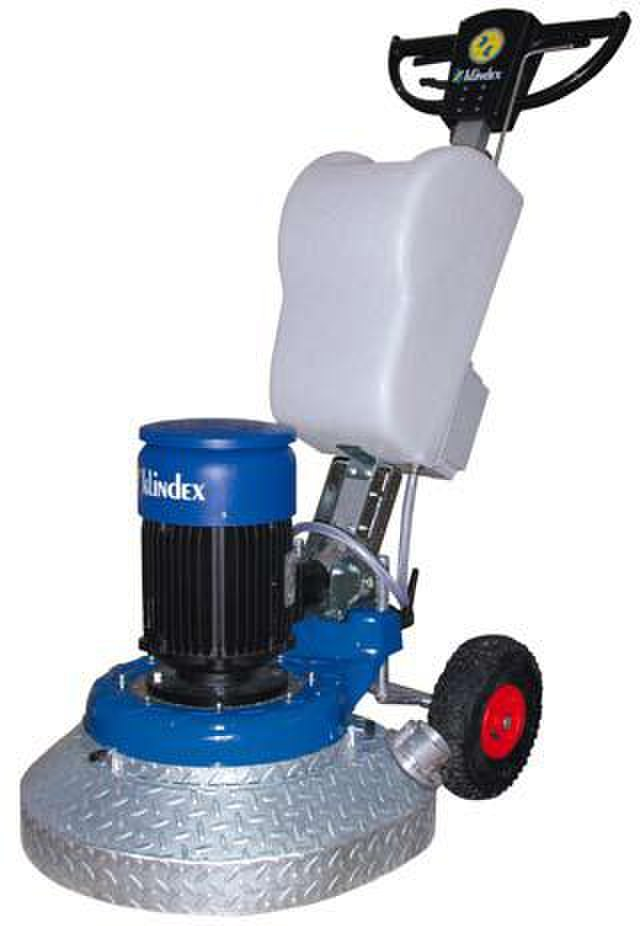
These tools work incredibly well for cleaning and lightly abrading concrete floor surfaces as well as removing thin paint and coatings.
Read Also:
